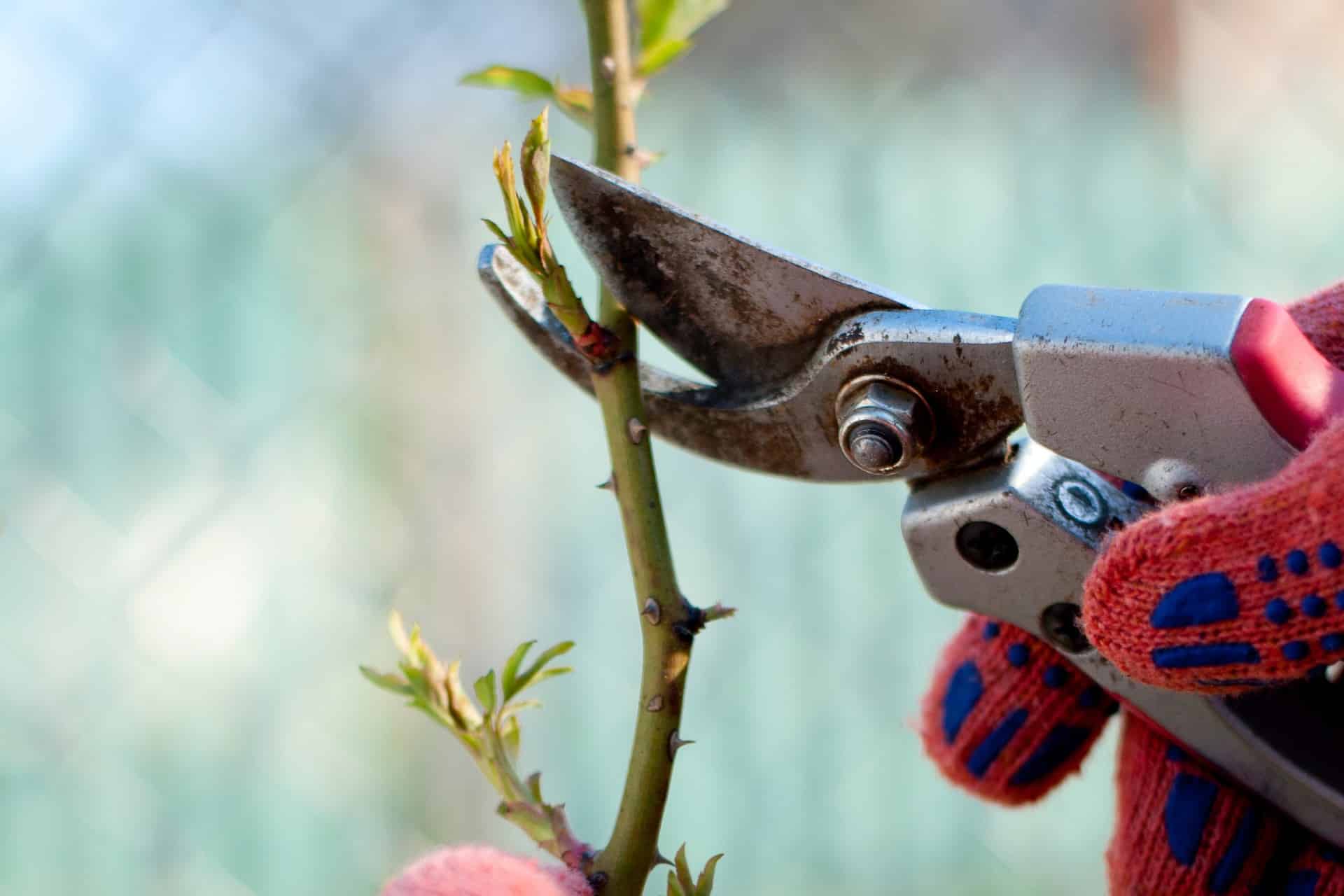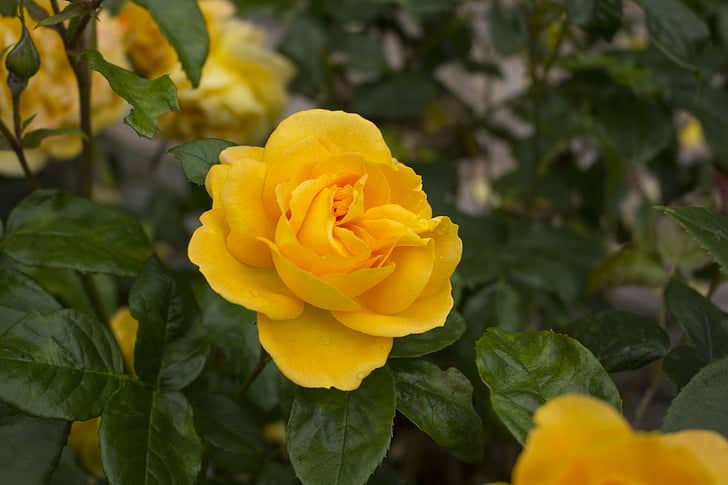No products in the cart.
Here we love anything mini, especially when it comes to miniature roses, as it falls into that category. The mini rose makes for a fun addition to your garden. The size can grow in containers, a hanging basket, or a window box.
So, keep reading to learn more about these beautiful outdoor plants.
More About Miniature Rose Bushes
As the name suggests, the mini rose is a dwarf variety of the larger roses. You find them available in various colors similar to the larger counterparts. The flowers look alike, with a high center and many petals. Many gardeners refer to them as spray roses.
The miniature rose looks spectacular, and grow mini roses you can easily do outdoors or indoors. These species are hardy and have no thorns, and they bloom repeatedly. But, at the same time, there is still a debate about where they originated.
Some sources suggest the rose plant is a hybrid from a Chinese dwarf-sized rose from centuries ago. According to the sources available, it was sold in the European and Asian markets in the 18th century.
Still, with their delicate blooms, we are pleased that these dainty delights have made their way into our gardens and home.
Mini Roses Caring Tips

With some background history behind us and before we get to care for these delicate delights, here is another interesting fact. The miniature rose is a true rose and has smaller flowers. The rose is hardy as it is propagated from its roots and not grafted onto a rootstock.
Hence, they can tolerate cold better compared to other roses.
The Best Soil For Growing Miniature Roses Outdoors
Your miniature rose varieties and care are similar to your full-size roses. Rose thrives in well-draining soil like loamy soil. Depending on where you plan on growing mini roses, the soil differs.
Do not use your garden soil for containers but use potting soil instead. The reason is that the soil from the garden is compact and heavy, and the roots will suffocate with frequent watering. With nutrient-rich soil, it will drain well to prevent root rot.
But if you plant your miniature rose bushes in the garden, you can dig a hole at the same depth as the pot you received your plant. Then, make the hole a foot wider, remove your rose, and loosen the roots on the root ball.
Then add some organic matter and place your rose bush in the center with the roots spread out. Now, fill it with soil, pat it down, and water well before applying a mulch layer. The added mulch protects the delicate roots and helps retain water.
Light Requirements For Mini Rose

As with the full-size roses, most miniature roses thrive in full sun. Still, as your standard rose bushes, it can tolerate some shade. But when grown in too shady conditions, the rose blooms become sparse.
The rule of thumb is to provide roses with at least six to eight hours of sunlight. The same applies to your indoor miniature roses that need bright light. The fantastic thing is that miniature roses continue blooming.
You can grow them in the USDA hardiness zone 5 to 9, but when grown in zones eight and above, it helps to provide them with some afternoon shade.
Watering Your Garden to Potted Plant
Determining how much water your mini roses needs depends on the growing conditions. Generally, you will provide your roses with at least an inch of water a week. Hence, it means daily watering, every other day, or twice a week.
The best is watering well to build a healthy root system. We recommend watering at the base to prevent damaging the buds. You may do more frequent watering during extreme heat than traditional roses.
For your container roses, ensure enough drainage holes for the excess moisture to run out. You can water your potted plant when the top two inches of the soil surface dry.
Temperature & Humidity

Your miniature roses can tolerate different temperatures but do best around 70°F. While cold hardy, they cannot withstand freezing temperatures below 32°F. So, if you have your mini roses growing in containers, bringing them inside out of the cold is best.
Still, when brought indoors, they need direct sunlight with medium humidity. Hence, it helps provide your mini roses in a pot with the proper light and moisture. But, if you cannot move the containers, it helps to wrap some burlap around the pot for cold protection.
For your outdoor roses, you can add a layer of mulch to protect the roots against frost. Yet, another popular method is to provide overwintering for most rose bushes. The technique is known as collaring.
It entails removing all the foliage but not the hips from the bush. You then tie your bush up using twine to surround it with a wire hoop forming a collar. Then fill the collar with some dry leaves fallen from trees.
The leaves help to insulate the branches, and you can wrap them up using burlap. Then you cover the root zone and crown by adding soil, straw, or mulch to insulate the roots.
Fertilizing Your Miniature Roses

No matter what roses you have, they can be heavy feeders. As your miniature roses continue with their blooming throughout the growing season, they will need a regular feed.
You can use a slow-release fertilizer or a commercial rose food. The best is to feed your rose bush when they start to leaf out and develop a flower.
We recommend stopping feeding about eight weeks before the first expected frost.
How to Prune Miniature Roses
As with your full-size roses, your mini roses needs pruning before the new growth appears in later winter to early spring. Pruning miniature roses needs no hard trimming, and you can remove dead or broken wood. You can trim your rose bush one-third to maintain its shape and encourage new growth.
Propagating Your Miniature Rose Plant

As with the full-sized cousins, your mini roses are popular gifts at local garden centers. The best method is to use root cuttings or stems broken off. The best time to use cuttings is in spring when the bush blooms and the flowers fade or fall.
It also helps to take mature stems like semi-hardwood or hardwood cuttings. Then, using potting soil, you can take a broken branch to plant into a rooting medium and add peat moss or perlite. If you cannot plant it, immediately wrap the broken end in a wet paper towel or plastic wrap to keep it moist.
When planting it in a container, snip off the broken end to help with moisture absorption and snip the bottom leaves off and the faded flowers. Then, you can dip the cut end into the rooting hormone.
Then push the cut end into moist soil and moisten further using a spray bottle. You can seal the pot in a zipper-close storage bag but ensure it remains away from the cutting. Alternatively, you can cut a cooldrink bottle big enough to fit over the cutting and keep the screw top on.
Place the container outdoors in a shady spot or indoors in a sunny location but not in direct light. Once your min rose develops roots, you can remove the screw top. After a week, remove the covering for fresh air and keep your plant moist.
Once you see new leaves with good root development, you can transplant them into a soil-based potting mix and repot them after seven months or plant it in the garden. The method used here is similar to your full-sized roses.
Mini Rose Varieties
There are different mini varieties with a petite size to trailing habits you can grow as indoor plants or in the garden.
Floribunda Mini Roses

These roses have several blooms on the branches that is bountiful and beautiful. It is extremely hardy and disease tolerant, while the flowering is continuous during the growing season.
Grandiflora Miniature Roses

The beauty has an elegant look as your tea roses, but it grows multiple flowers on all the limbs and repeats it throughout the season. It grows tall and is a tough plant to add romance to a garden.
Climbing Roses

You can let the mini climbing roses grow up a trellis, structure, or fence. It is a popular variety available in an array of colors.
Miniature Rose Shrub

Grow these mini rose shrubs as filling plants for ground cover, hedges, or any other landscaping design.
Miniature Rose Diseases & Pests
While many people would say the mini roses are disease resistant, they can still be bothered by the same pests and fungal infections as true roses. These can include the fungal disease black spot to powdery mildew.
To prevent these from infecting your plant, it helps to provide it with air circulation. Hence, plant your rose bushes a few feet apart and water at the base and not over your plant. If you find your roses become infected, it helps remove the affected branches and dispose of them.
Other common pests are spider mites, thrips, chafers, and Japanese beetles. It helps to treat pest infestations using insecticide or neem oil. So, keep an eye out for pests on your houseplants and garden plants to prevent fungal diseases.
Frequently Asked Questions
Giving a timeframe for growing mini roses in a pot is not easy. While they do well in containers, they will need a lot of sunlight to allow the foliage to thrive and develop buds. In addition, your roses will eventually have to be planted in the landscaping.
When growing miniature roses in the USDA hardiness zone five to nine, your mini roses return year after year.
The blooming season for miniature roses is mid-spring and continues into early fall. The important thing is to provide your plant with at least six hours of sunlight with regular feedings. For varieties like the Lemon Drift or Fairy Moss, you can do deadheading of the faded blooms before they go into the hip leading to dormancy.
You can find the miniature roses bush at local garden centers or with us at Plantly. You can grow them as houseplants for a short while to transplant into the landscaping.
Whether you want to buy, sell or simply reach out to other plant enthusiasts, Plantly is the right place to be!


